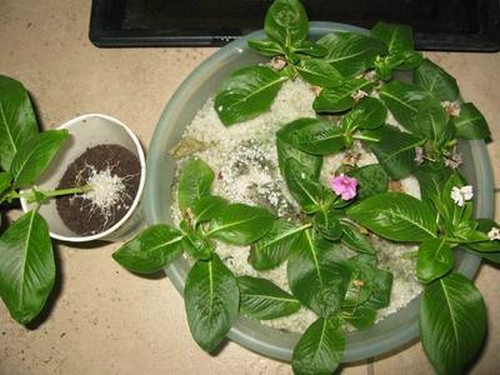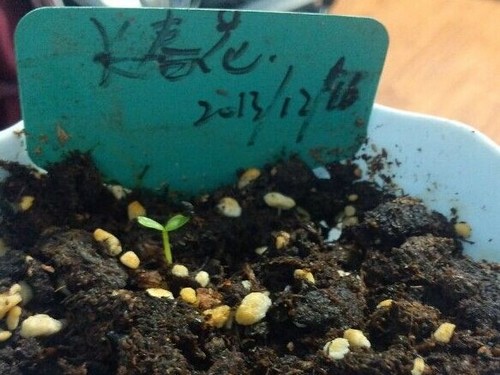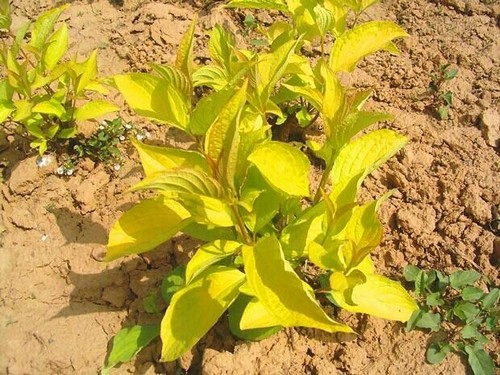Cutting Seedling technique of Catharanthus roseus
The cuttings of Catharanthus roseus are usually cut in spring or early summer, with a length of 8 cm to 10 cm, cut off the lower leaves, leave the top 2-3 pairs of leaves, insert them into the sand bed or rotten leaf soil, keep the soil slightly moist, room temperature 20-24 ℃, and rooting 15-20 days after cutting.

The cuttings are mostly carried out from April to July, and the mature shoots without diseases and insect pests should be selected as cuttings. Generally, the shoots with a length of 10 cm to 12 cm at the top of the plant should be selected, and the length of cuttings should be 5 cm to 7 cm. The cutting medium was a mixture of plain sand, vermiculite and peat, wrapped in a small mass of mud at the base of the cuttings, and cut in a cold bed at room temperature of 20 ~ 24 ℃. After about 20 days, the cuttings could be transplanted to the pot after rooting and survival. Because the growth of cutting seedlings is not as good as that of sowing seedlings, it is rarely used in cultivation.
The seeds of Catharanthus roseus are between 700 and 750 per gram. Catharanthus roseus is a perennial herb, which can blossom all the year round under suitable conditions. However, in the Yangtze River basin, because the climate is too cold, it is often cultivated in one year, and the sowing time is mainly from January to April. Sowing should use loose artificial media, bed sowing, box sowing seedlings, when conditions can be used to raise seedlings. The pH value of the medium is 5.8 ~ 6.2 and the EC value is 0.5 ~ 0.75. After disinfection, the temperature of the medium is about 22 ~ 25 ℃ after sowing.
[seedling stage]
The first stage:
The radicle was exhibited 4-6 days after sowing. At the initial stage, the seedling medium was kept moist without fertilization, and the temperature was kept at 25-26 ℃. Catharanthus roseus seeds are light-resistant and can germinate well in the dark and need to be slightly covered with coarse vermiculite or black film.
The second stage:
When the temperature of the medium is controlled at 22-24 ℃, the water content should be controlled as soon as the radicle is exposed. Watering after the medium is slightly dry can promote germination and control the disease. At this stage, we need to strengthen the light, so that the sunshine time can reach 12-18 hours per day, the main root can grow to 1-2cm, the cotyledons expand and grow the first true leaf. The pH value of the soil was controlled at 5.5-5.8 and EC was less than 0.75. after the cotyledons were fully expanded, the cotyledons could be fertilized. 50-75ppm 14-0-14 and 20-10-20 water-soluble fertilizers were used alternately every seven days. At this stage, after the germ ejects the medium, when the cotyledons have not yet unfolded, special attention should be paid to maintaining the humidity in the air so as to avoid the seed coat not falling off because the air is too dry, especially when the temperature is low. This phase lasts about 7-10 days.
The third stage:
When the medium temperature is controlled at 20-25 ℃, the incidence of disease will increase and the growth will slow down when the temperature is below this range. The medium should be kept dry and wet, but should not wilt due to lack of water. Catharanthus roseus needs a warm and dry environment, which is conducive to plant root development. The soil pH value is controlled between 5.5 and 5.8, and the EC value is less than 1. 100-150ppm 20-10-20 and 14-0-14 water soluble fertilizers can be applied alternately every 5-7 days. This phase lasts about 14-21 days.
Phase IV (7 days):
The temperature of the medium is controlled at 18-20 ℃, and then watered when the medium is properly dry. 100-150ppm 14-0-14 water-soluble fertilizer is applied to strengthen ventilation and prevent excessive growth. This phase lasts about 7 days.
Time: 2019-06-11 Click:
- Prev

Sowing and propagation techniques of potted Catharanthus roseus
Catharanthus roseus has 750 seeds per gram, and the optimum temperature for germination is 18-24 ℃. It can be sowed in spring in April, and the mixed soil of rotten leaf soil, culture soil and fine sand can be disinfected by sowing Pansheng, and germinate 14-21 days after sowing. After emergence, at noon when the light is strong and the temperature is high, shade should be added for 2-3 hours. Waiting for seedlings to be 5 cm tall
- Next

Cuttage Seedling technique of Rhizoma Rubra
The dry stem of Redwood changes from green to yellow in autumn, and gradually thickens to golden yellow with the decrease of air temperature. it is extremely bright and dazzling in the sunlight after snow, the color is the brightest in the side light, and shows a little green in the yellow when it is backlit; cold resistance, drought resistance, wind damage resistance, water humidity resistance, no obvious diseases, adapt to various soil and environmental conditions
Related
- Fuxing push coffee new agricultural production and marketing class: lack of small-scale processing plants
- Jujube rice field leisure farm deep ploughing Yilan for five years to create a space for organic food and play
- Nongyu Farm-A trial of organic papaya for brave women with advanced technology
- Four points for attention in the prevention and control of diseases and insect pests of edible fungi
- How to add nutrient solution to Edible Fungi
- Is there any good way to control edible fungus mites?
- Open Inoculation Technology of Edible Fungi
- Is there any clever way to use fertilizer for edible fungus in winter?
- What agents are used to kill the pathogens of edible fungi in the mushroom shed?
- Rapid drying of Edible Fungi

